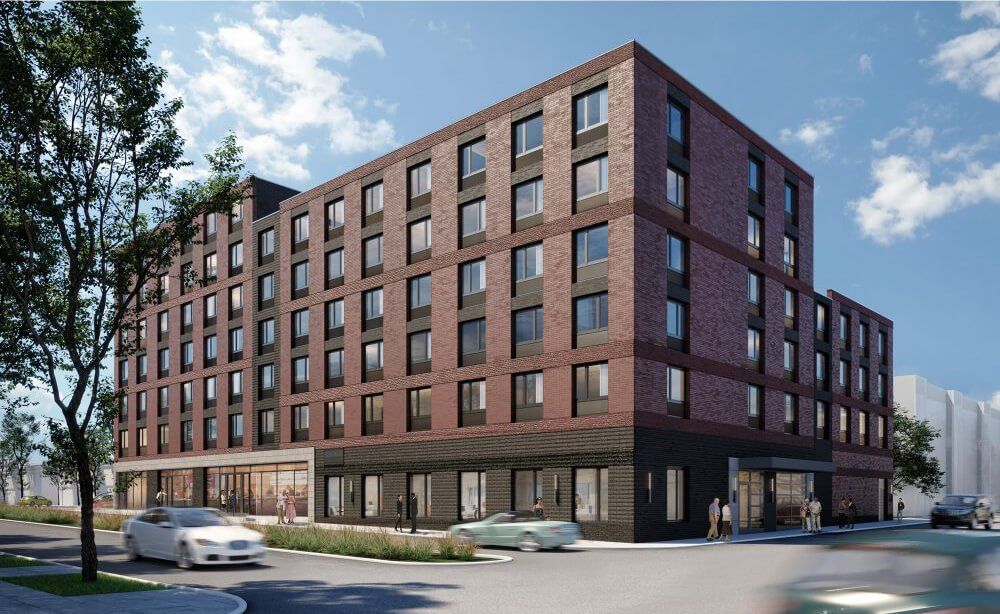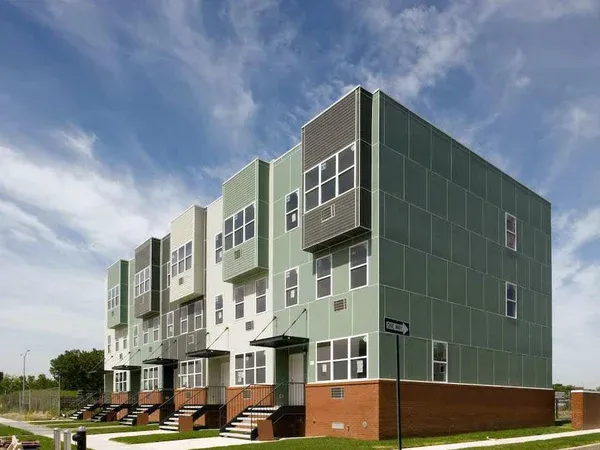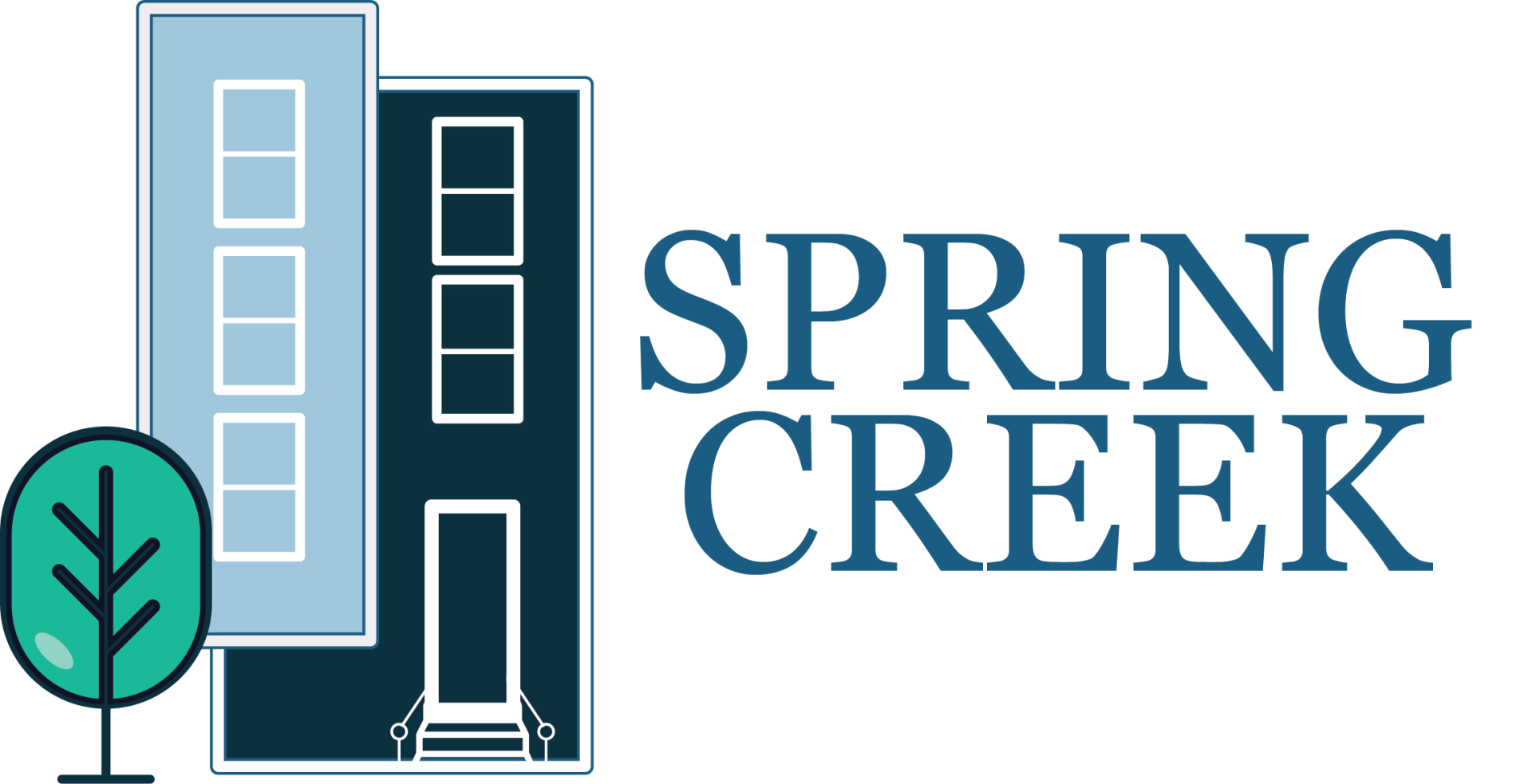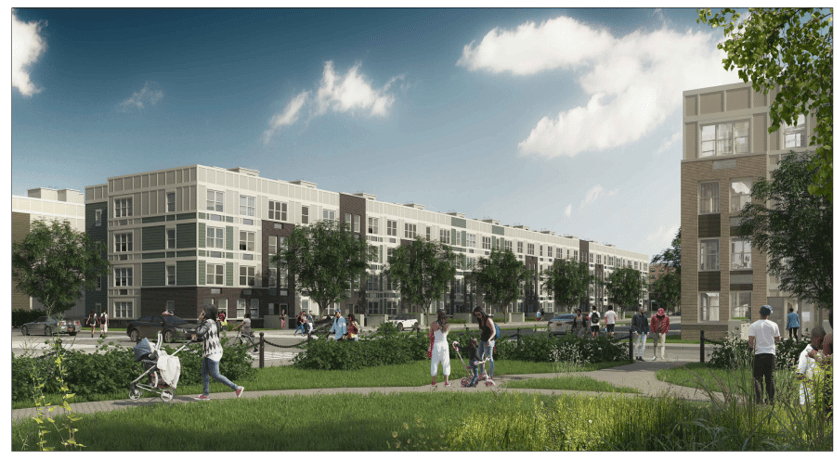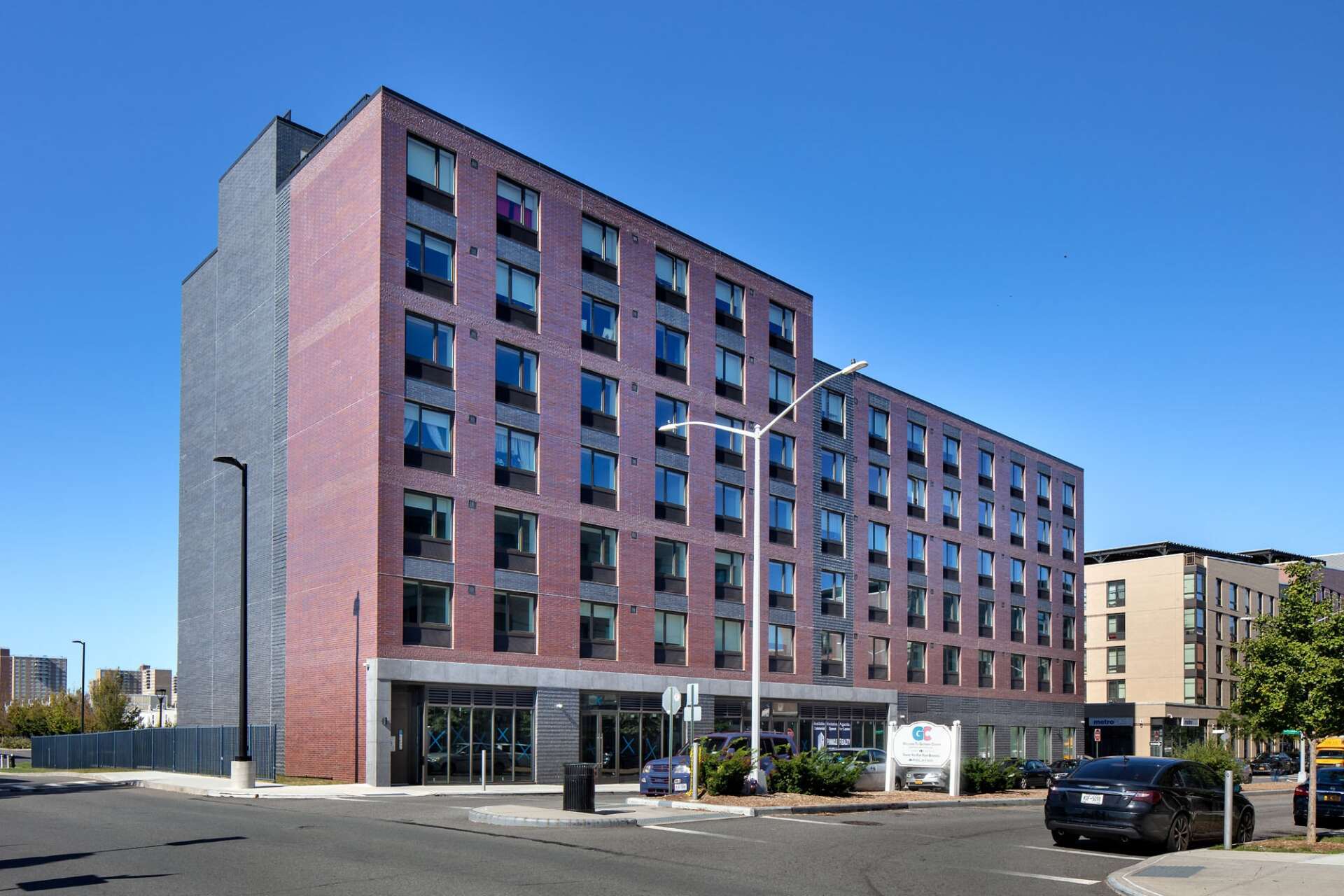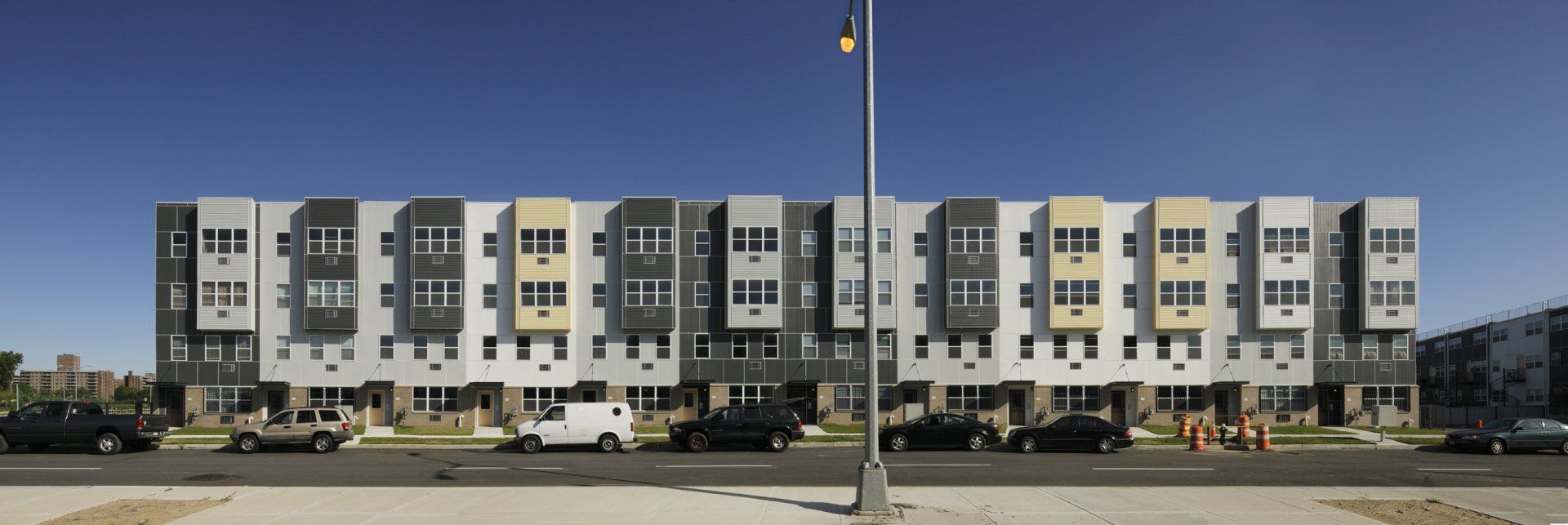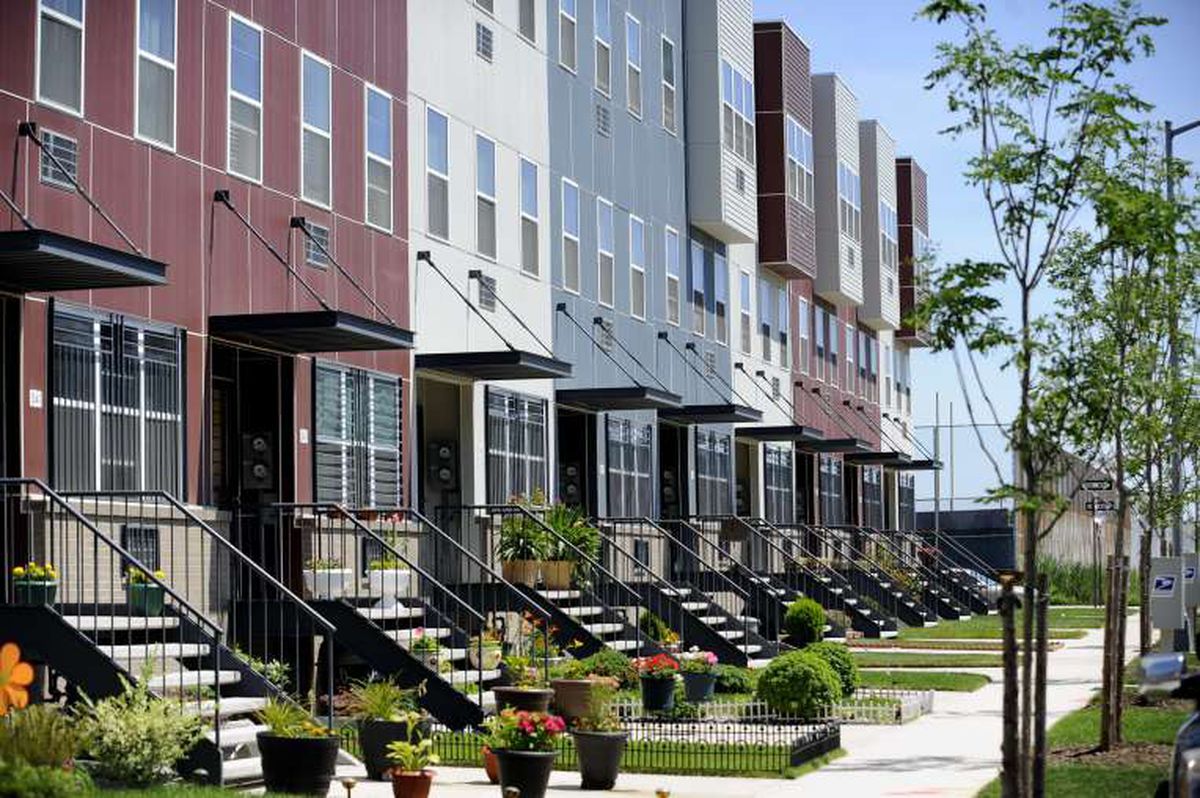Homes, Hope Rising From N.Y. Rubble
In the desolation of East Brooklyn, a suburb grows.
Each day, stolid brick row houses with trim lawns sprout incongruously on arson-gutted streets. Black and Spanish-speaking families who have never lived in their own homes dress in Sunday best to sign mortgages on the dotted line. Rose bushes bloom, and barbecue grills send a new kind of smoke signal into the air.
The message from East Brooklyn, one of the poorest neighborhoods in the nation, is that from the ashes -- with no help from Washington, thank you -- housing for working-class families can be built without red tape, corruption or skyrocketing price tags.
At a time when the Reagan administration has slashed federal housing funds by 60 percent since 1980, and the wastelands of urban poverty continue to spread, city and state officials from Maryland to Texas and from Britain, Pakistan and South Africa are flocking here to see a successful grass-roots enterprise called Nehemiah.
"This community was considered a graveyard," said the Rev. Johnny Ray Youngblood, pastor of St. Paul Community Baptist Church. "Nehemiah saved it."
The project, sponsored by about 50 parishes that formed an ecumenical group called East Brooklyn Churches, was named after the biblical prophet Nehemiah who was sent in the 5th century B.C. to rebuild Jerusalem after the Babylonian captivity.
So far, 384 two- and three-bedroom homes have been built and sold for $41,000 each to families with annual incomes of $20,000 to $40,000. Twenty-seven more are rising each week in the project's first 1,500-home phase, which covers 200 acres of Brownsville, a neighborhood of rubble-strewn lots, boarded-up stores and grim public-housing high-rises.
Sandra McCollum, 32, an unwed mother of two, heard about Nehemiah through her Baptist church.
"When you come up in Brownsville, you don't look to set your sights very high," she said. "You get a job. You make just enough to meet your needs. You don't look for pleasure. I knew I could never afford a home. That was like wanting the impossible."
As a $19,000-a-year secretarial supervisor at a Manhattan hospital, McCollum had meager savings. But her religious faith, she said, gave her the strength to scrape together the $5,000 down payment in two years. She doubled up with her sister's family, living in one room with her son, 4, and daughter, 9. Her mother cared for the children, and McCollum stopped taking them out for Sunday dinners. She stopped buying clothes.
"There were times I said, 'I can't,' " she remembers now, sitting in a pristine living room, her flowered china displayed in a glassed cabinet. "But every day after work, I'd walk over to the empty lots where they were going to build. There was garbage and abandoned cars. I'd try to envision what it would look like. I'd claim it for myself. Nehemiah was a dream, and my dream was to be part of Nehemiah."
On Dec. 11, she took title.
"I got my keys," she said. "I ran to the house and I shouted, 'It's mine! It's mine! It's finally mine!"
If Nehemiah seems to be a Great Society dream come true, it is in some ways the antithesis of that era of heavy-handed federal intervention. What makes it unusual is that it grew out of the community, rather than from the drawing boards of any federal, state or city agency.
In 1980, five pastors from local Roman Catholic, Baptist and Lutheran churches invited the Industrial Areas Foundation -- heir to Saul Alinsky's Chicago-based community organizing group -- to help them form a social action group. With other parishes, they raised funds for two full-time organizers to train the black and Hispanic parishioners who now lead the East Brooklyn Churches (EBC).
In five years, the EBC has become a powerful, politically independent, dues-based organization that can turn out 7,000 people for a rally, register 10,000 new voters in a year, and persuade politicians to put up new street signs, inspect local grocery stores and now, in its most ambitious endeavor, help with Nehemiah.
"We're saying to government, 'Let's do it a different way,' " Youngblood said. "Let's not plan housing for Brooklyn from Washington. Let's plan it from Brooklyn."
Washington is listening: Legislation to spur similar programs in other cities passed the House Banking Committee this week. The bill, incorporated in an omnibus housing act, would provide $150 million for a revolving second-mortgage fund.
"The federal government has been floundering in the housing field," said Rep. Charles E. Schumer (D-N.Y.), the bill's chief sponsor. "The old programs have been discredited. But Nehemiah has a real chance of working elsewhere."
In New York, EBC was inspired by a series of columns in the Daily News by retired builder and civic activist I.D. Robbins. A plain-spoken gadfly and one-time mayoral candidate, now well into his 70s, Robbins was pushing a simple idea: "Levittown" in the ghetto.
"The devastated inner cities give you a chance to do in big cities what you formerly did in the potato fields after World War II," Robbins said, referring to William J. Levitt's vast subdivisions on Long Island. "If you knock everything down, you can start all over again."
EBC persuaded Robbins to come out of retirement on his New Jersey farm to run the project. For each house built, he receives $1,000 -- far less, after overhead costs, than he earned as a commercial builder.
Nehemiah's success is based on home ownership, critical mass, low density, and low-cost mass-production building techniques. Other programs have failed, Robbins argues, because even middle-class occupants will not maintain buildings that do not belong to them.
Scatter-site housing and selective rehabilitation do not work, he said, because a few blocks of new or upgraded housing are soon overwhelmed by surrounding decay. To turn a neighborhood around, Robbins argues for a minimum of 1,000 houses built side by side -- a factor that could limit Nehemiah's applicability to cities such as Baltimore, which has been studying the project but may not have large enough tracts available.
While Nehemiah is intended for stable families of mechanics, mailmen, nurses and other moderate-income workers, it has an important ripple effect on the availability of low-income housing. Forty percent of Nehemiah's new owners come from public housing where they were stuck, paying supplemental rent as their incomes rose, because of the city's drastic shortage in middle-income housing. As they move to Nehemiah, they free up units for some of the 175,000 families on the city's public-housing waiting list.
Robbins saved about $6,000 per house by persuading the city to allow him to build a central sewer main to hook up to the city's sewer system, avoiding the need to tear up streets for individual hookups. Mass production reduced the building cost to $51,000 for each row house -- the same kind of home, according to Robbins, being built for $80,000 each elsewhere in the city. (High-rises, which neighborhood residents oppose as dangerous and impersonal, cost about $100,000 per apartment.)
EBC initially raised $5 million from its churches for a revolving interest-free construction fund. The Lutheran Church-Missouri Synod, spurred by their Brownsville parish, committed $1 million; the Roman Catholic Diocese of Brooklyn $3 million, and the Episcopal Diocese $1 million toward a $12 million goal.
Bishop Francis J. Mugavero, son of a Brooklyn barber and leader of the diocese's 1.4 million Roman Catholics, headed the EBC delegation to Mayor Edward I. Koch. The churches, he told Koch, would put up the building funds if the city would provide free land, which had fallen into its hands through tax default, and subsidize each house with a $1,000 loan, repayable upon resale.
"At first the bureaucrats thought we were whacko," Mugavero said. "The mayor said he didn't have the money. Finally, I looked at him and I said, 'I'll tell you what: You steal the $10 million and I'll absolve you.' He looked at me and said, 'You've got it.' "
The city also agreed to defer property taxes for 10 years, and the New York State Mortgage Authority provided 9.9 percent mortgages to the new homeowners, bringing down their monthly costs to $350.
This week, New York officials approved Nehemiah's second phase, 1,100 lots in East New York, near Brownsville. A third Nehemiah project of 3,000 homes in Rockaway, Queens is on the drawing boards.
On a recent afternoon, Wayne Sexton, a 28-year-old postal worker, patrolled the lawn around his corner house scooping up dog droppings. Dozens of people he has never met knock on his door each weekend, wanting to know about Nehemiah.
"They be saying, 'Can we come in your house?' ", he said. "This is a beautiful thing going on, a beautiful opportunity.
